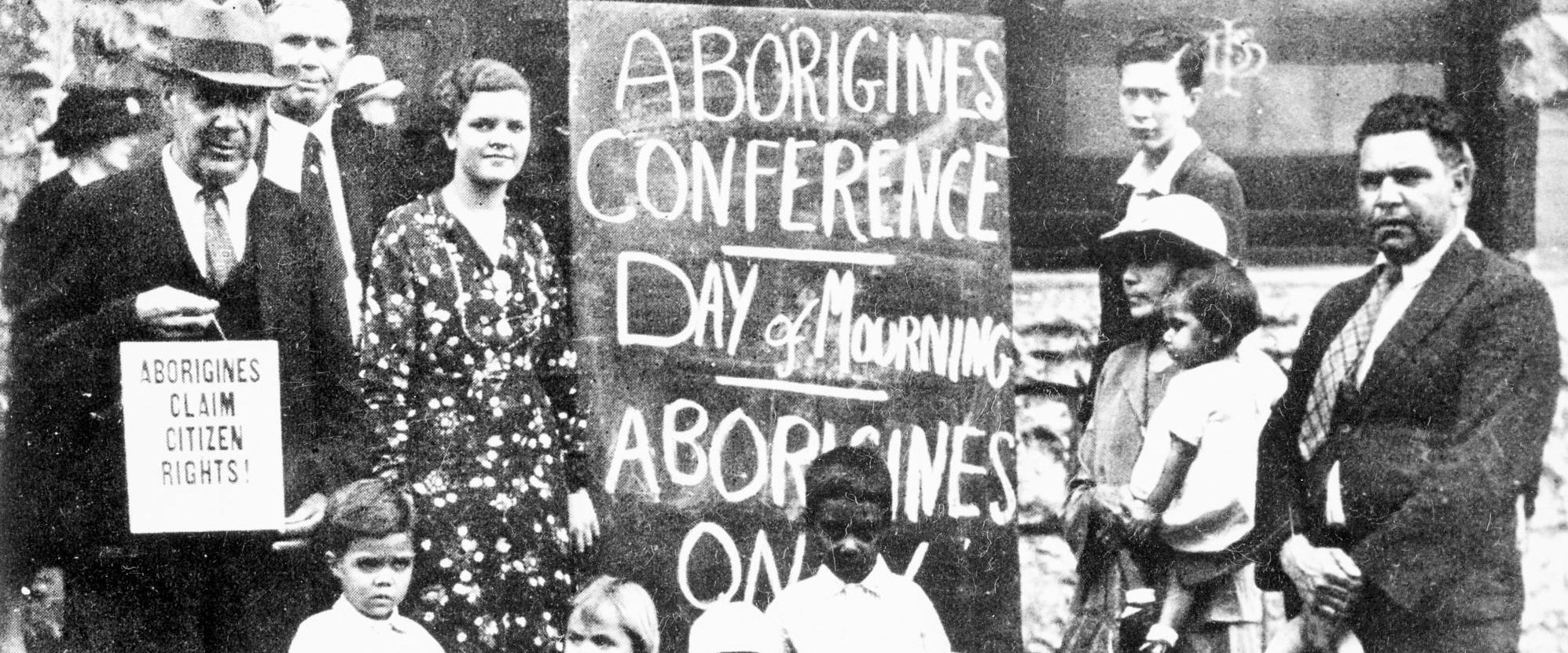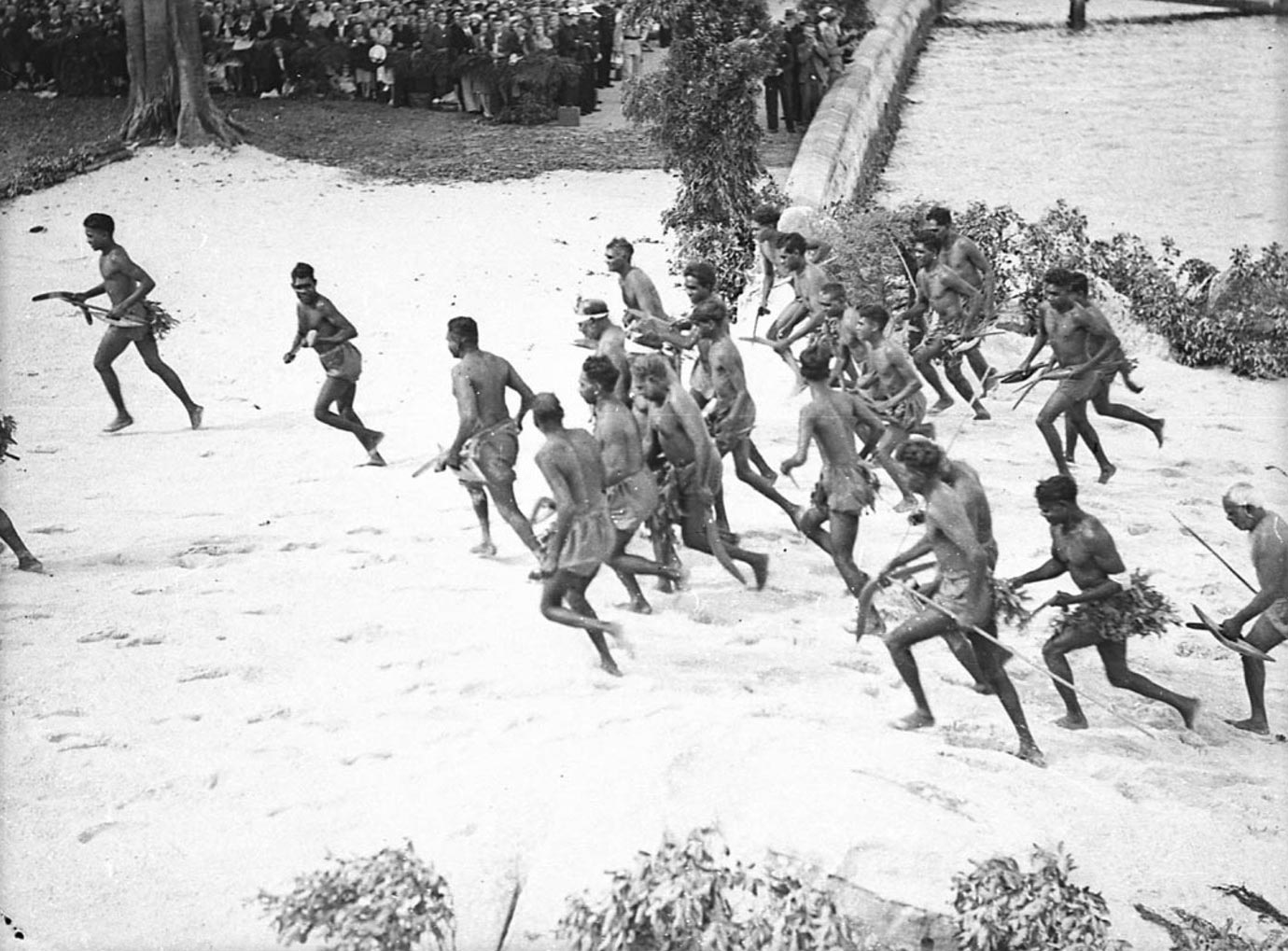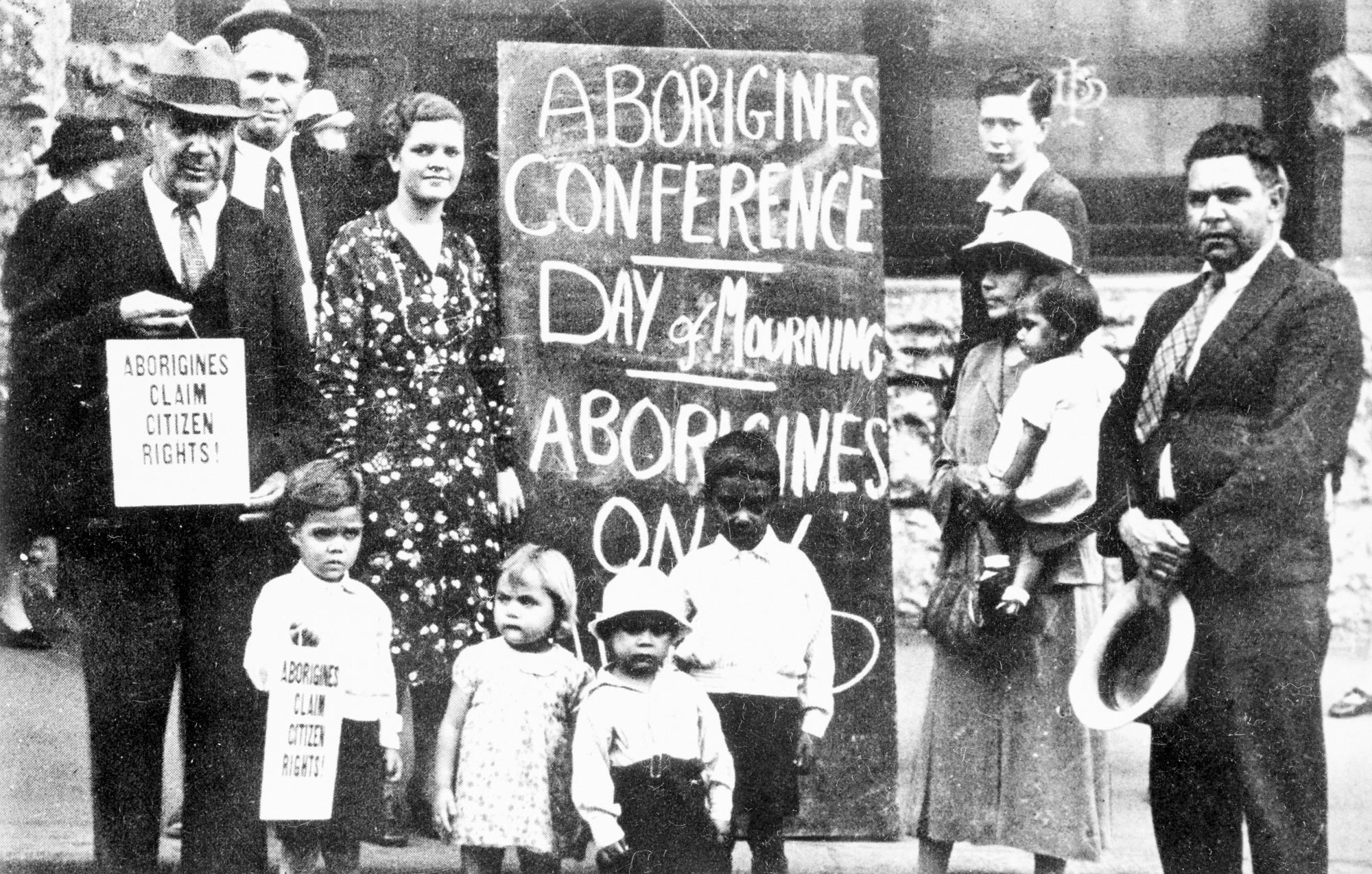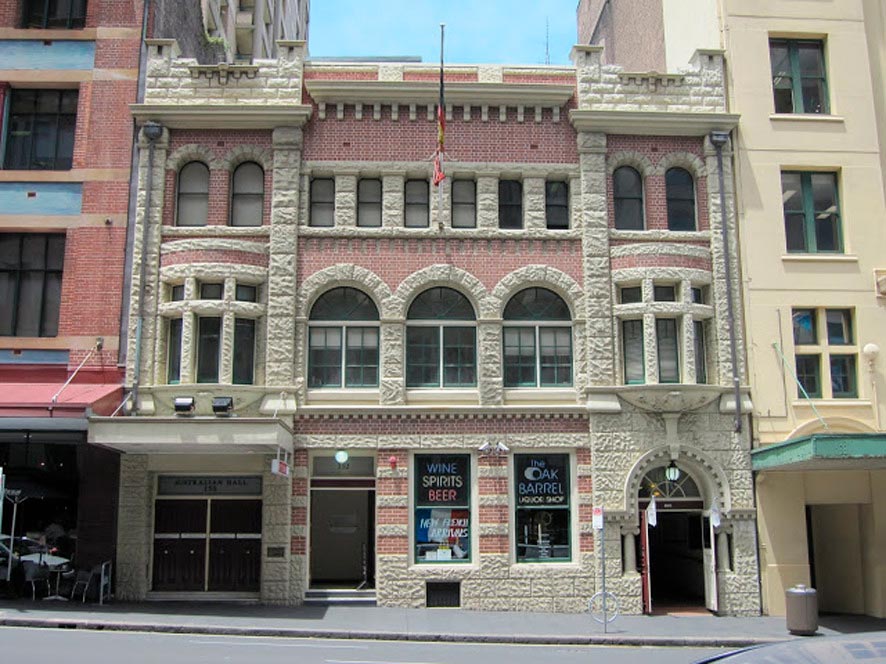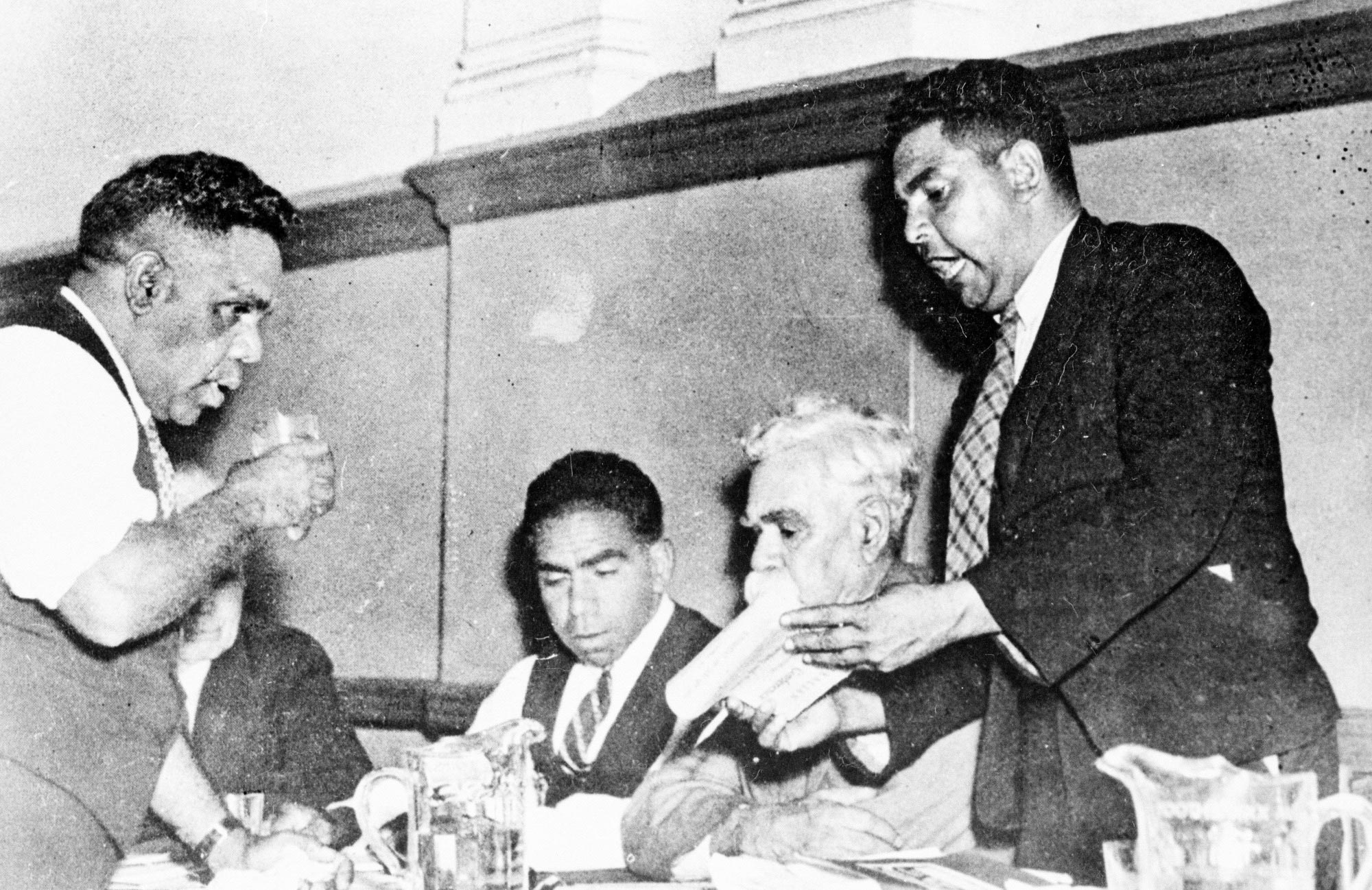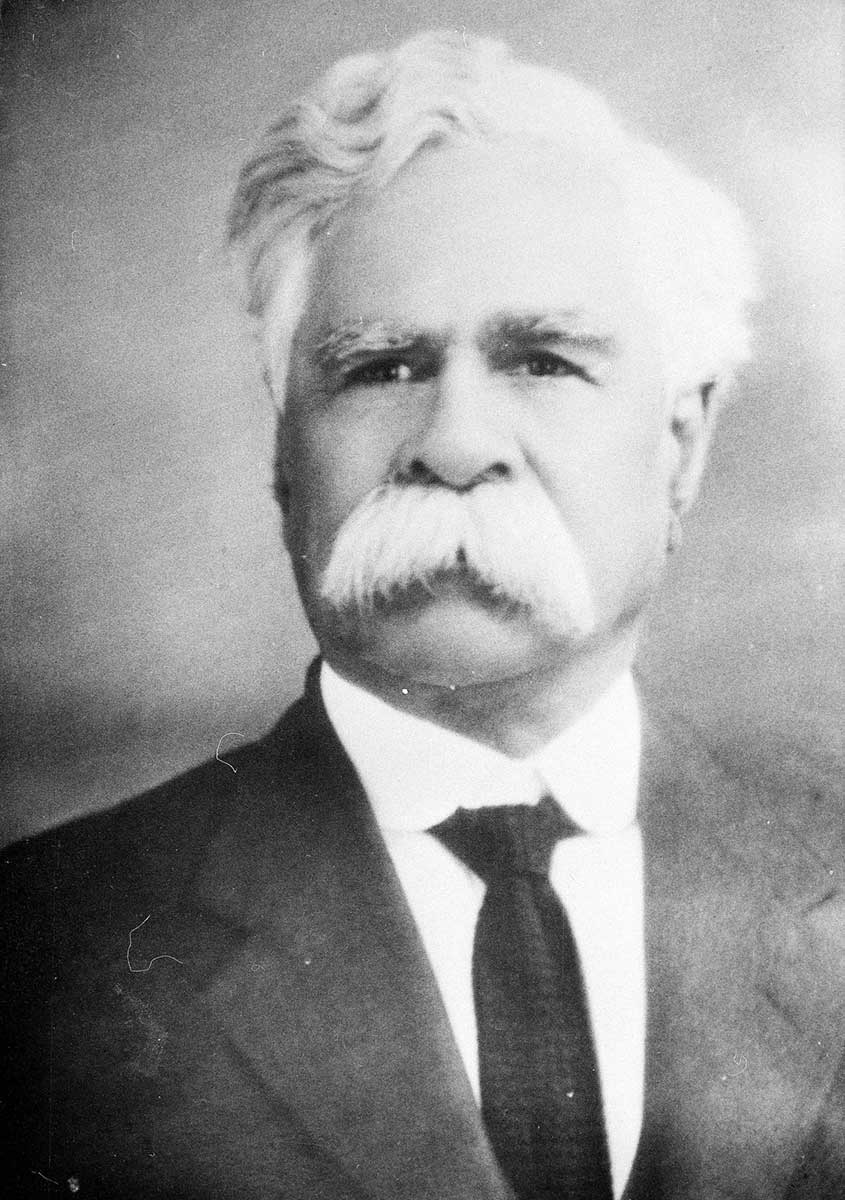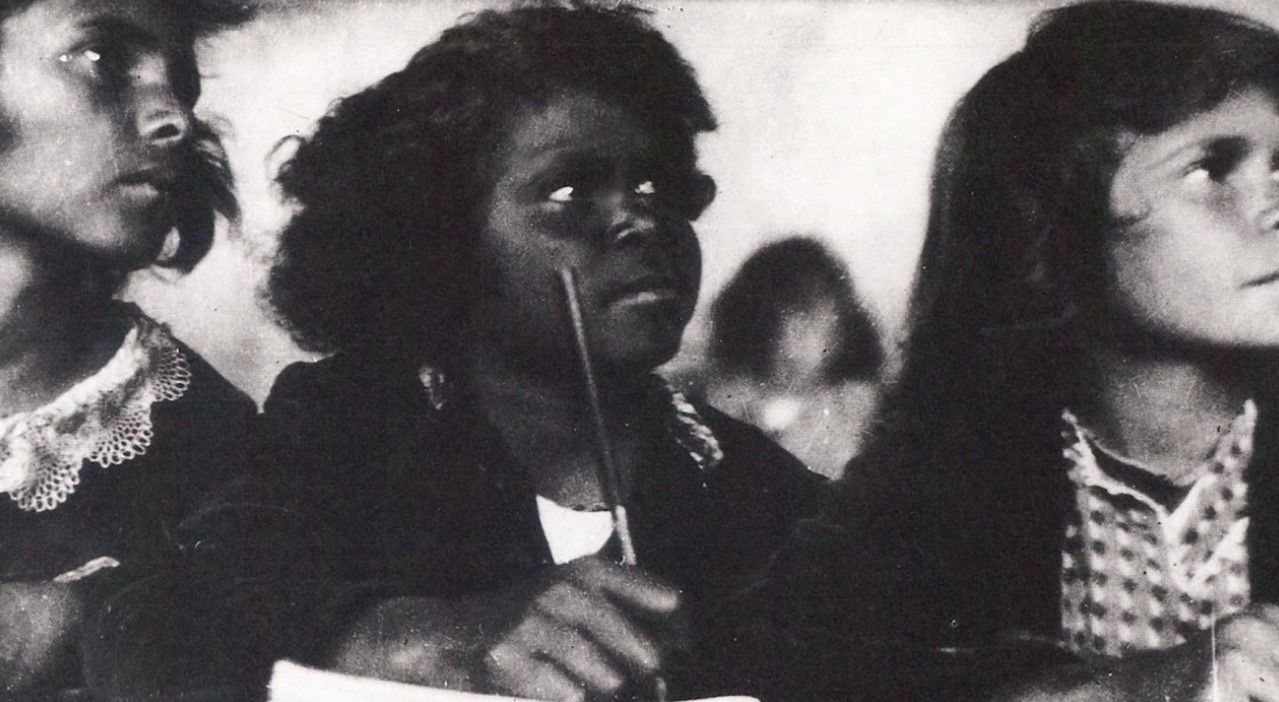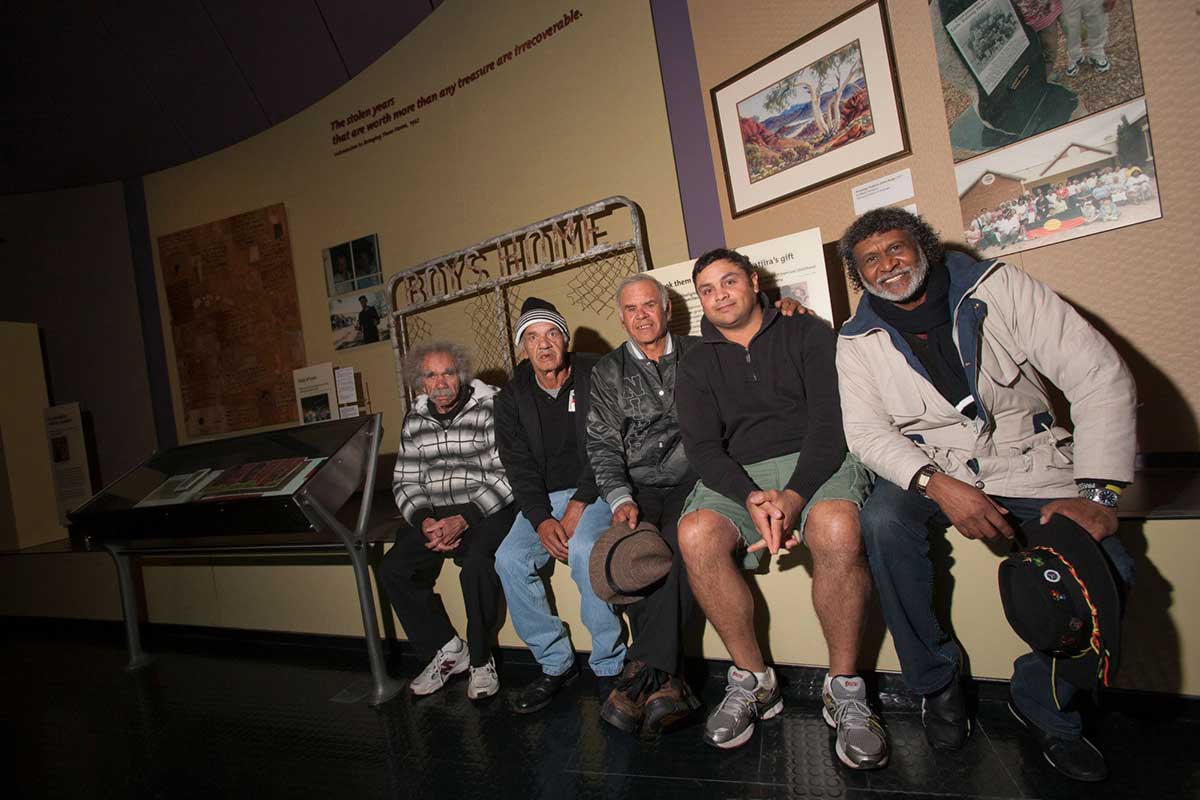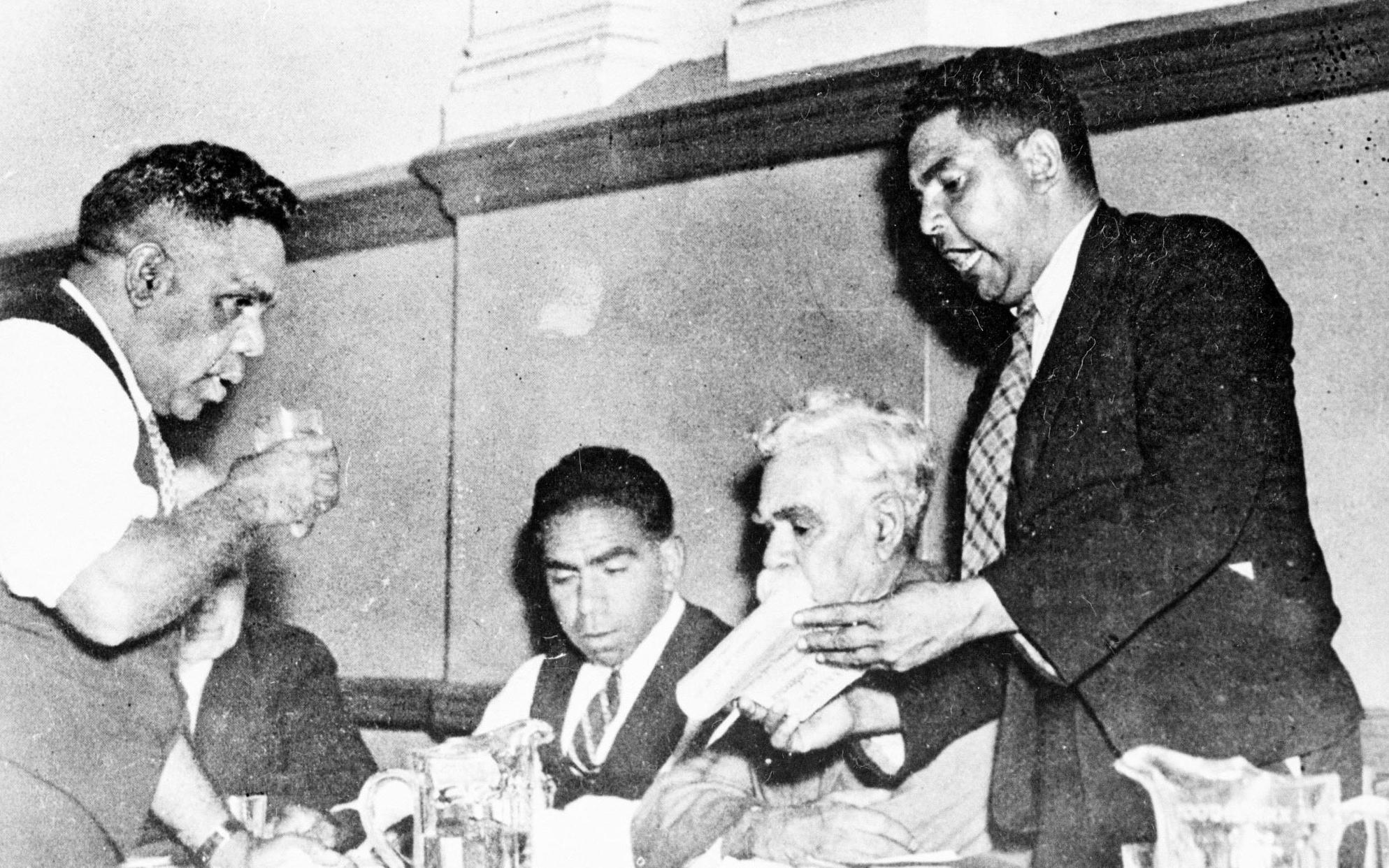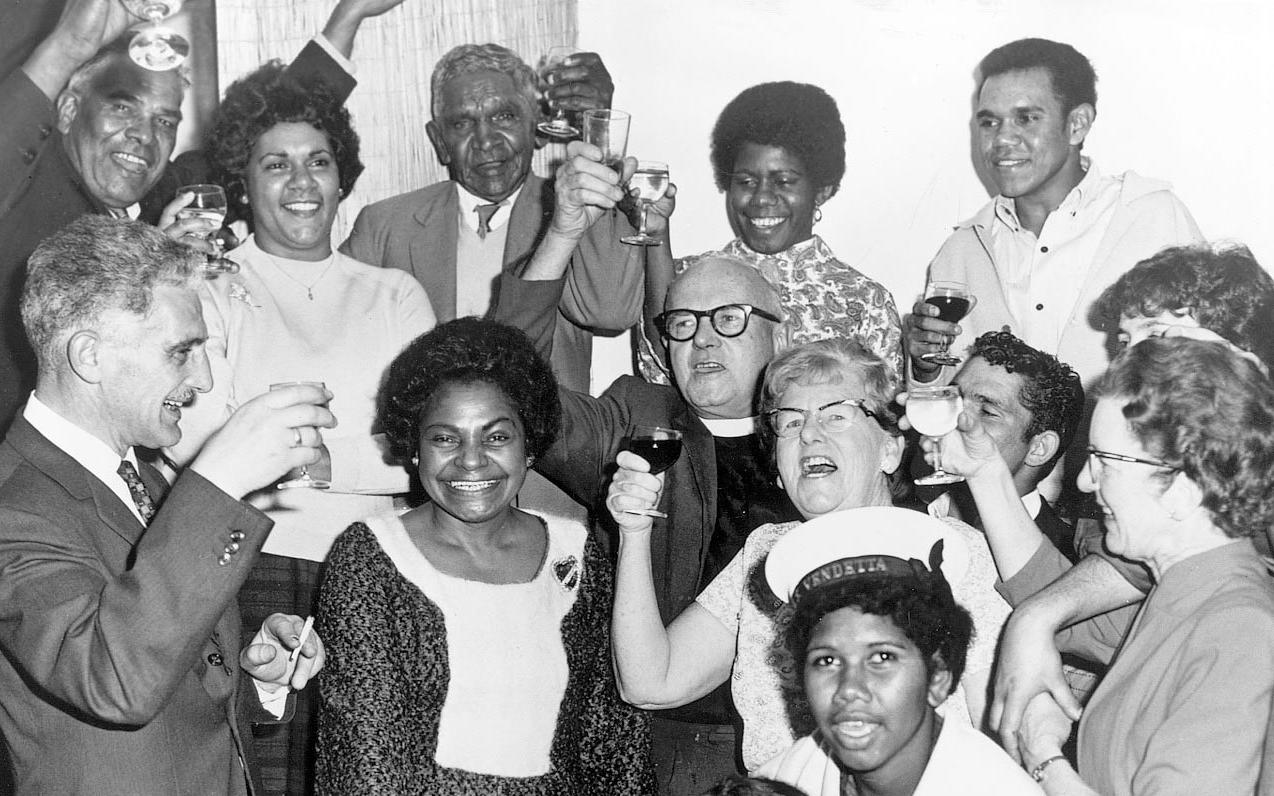A contested celebration
1938: First Aboriginal Day of Mourning
A contested celebration
1938: First Aboriginal Day of Mourning
In a snapshot
On 26 January 1938 many Australians were celebrating the sesquicentenary (150th anniversary) of the British colonisation of Australia. A group of Aboriginal people decided to respond by holding an Aboriginal Day of Mourning to protest the violence, dispossession and discrimination that Aboriginal people had experienced since 1788. It was the first national gathering of Indigenous people protesting against their treatment. It became an annual event for Aboriginal people and their supporters, before evolving later into NAIDOC week.

 Can you find out?
Can you find out?
1. What anniversary took place in January 1938?
2. What happened in Australian Hall at the same time as Sydney’s sesquicentenary celebrations?
3. Why did Prime Minister Joseph Lyons meet with the organisers of the Day of Mourning?
What events were planned for the sesquicentenary?
In 1938 Australians celebrated 150 years since Captain Arthur Phillip and the First Fleet landed at Sydney Cove in New South Wales. The main sesquicentenary celebrations took place in Sydney on 26 January. The day started with a re-enactment of Captain Arthur Phillip’s landing at Sydney Cove. Next, 120 motorised floats, celebrating different aspects of life in Australia, paraded through the streets of Sydney.
The event organisers wanted Aboriginal people to take part in the re-enactment, but Aboriginal people living in Sydney refused. Instead, the organisers brought in Aboriginal men from Menindee in western New South Wales. The men were told to run up the beach away from the British, even though this was not what really happened when the British landed in 1788.
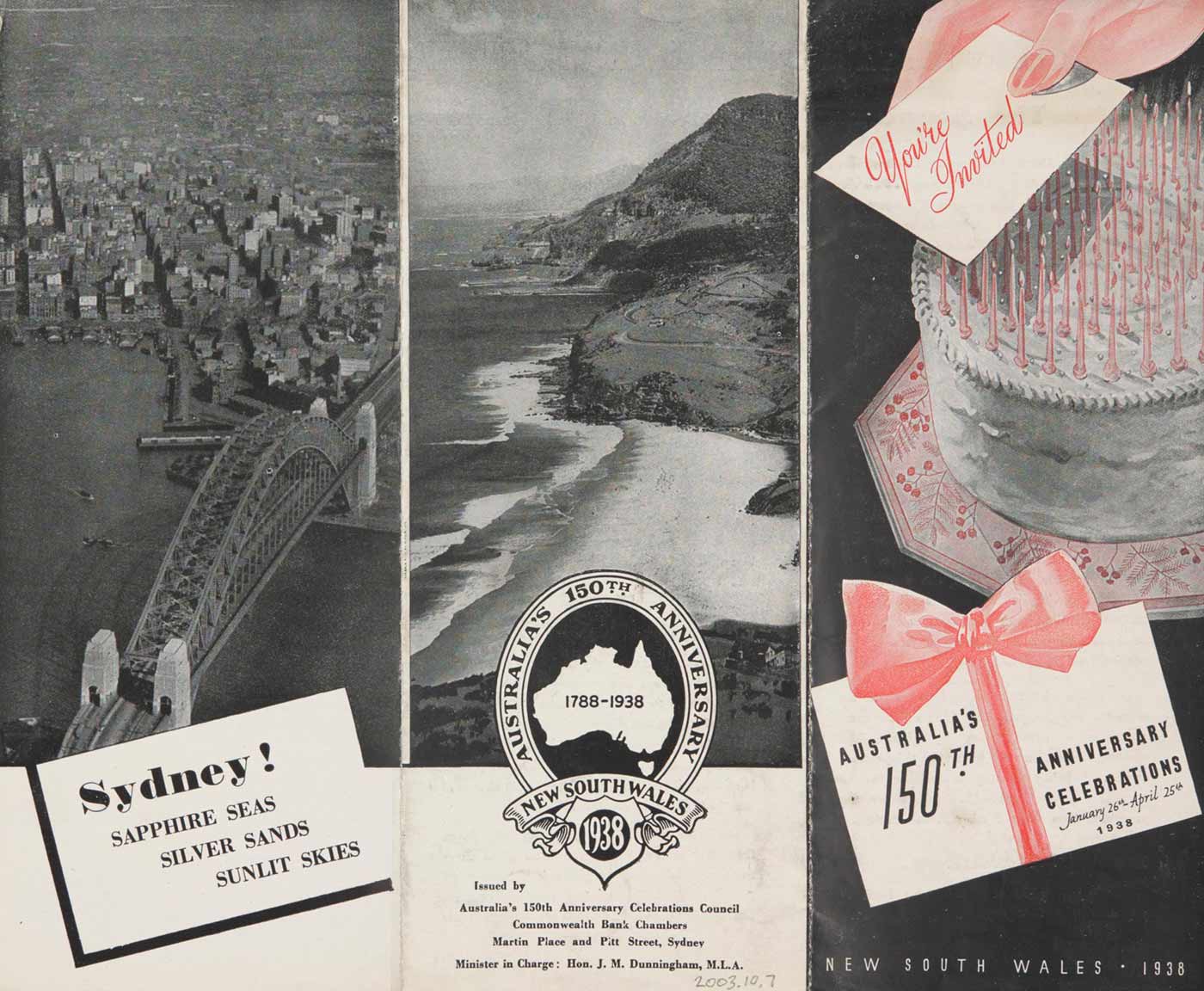
Why did the Day of Mourning take place?
In contrast to these celebrations a group of Aboriginal people decided to protest. They met at the Australian Hall in Sydney and declared 26 January a Day of Mourning.
They mourned the loss of their country, their freedom and the deaths of Aboriginal people since Europeans began to colonise Australia in 1788. They also argued that Aboriginal people should be given Australian citizenship, equal political rights and better access to education.
The protest was organised by Jack Patten, William Ferguson and William Cooper, who had set up Aboriginal lobby groups in New South Wales and Victoria. The Day of Mourning was the first time that Aboriginal activist groups from different states had worked together to organise an event.
Research task
At first, the Aboriginal group from Menindee who replaced the Sydney Aboriginal people also refused to take part in the 1788 re-enactment, but they eventually agreed. Do some research to find out why they reluctantly took part.
‘We, representing the Aborigines of Australia, assembled in conference at the Australian Hall, Sydney, on the 26th day of January, 1938, this being the 150th Anniversary of the Whiteman’s seizure of our country, hereby make protest against the callous treatment of our people by the whitemen during the past 150 years, and we appeal to the Australian nation of today to make new laws for the education and care of Aborigines, we ask for a new policy which will raise our people to full citizen status and equality within the community.’
Why was the Day of Mourning significant?
Aboriginal people had been lobbying for more rights and better living conditions for years, but there had been very little political change. The Day of Mourning was a chance to draw attention to the injustices done to Aboriginal people since European colonisation.
After the protest Prime Minister Joseph Lyons and his wife, Enid Lyons, met with the organisers of the protest. They spent two hours together, but the meeting did not bring about any practical political changes.
The Day of Mourning became an annual event for Aboriginal people and their supporters. Eventually, it was decided that the day should also celebrate Aboriginal culture, so it was moved to July and eventually became NAIDOC week.
Read a longer version of this Defining Moment on the National Museum of Australia’s website.
Research task
Jack Patten, William Ferguson and William Cooper were the main organisers of the Day of Mourning. All three men had set up Aboriginal organisations in their home states. Can you find out which group each activist set up?
 What did you learn?
What did you learn?
1. What anniversary took place in January 1938?
2. What happened in Australian Hall at the same time as Sydney’s sesquicentenary celebrations?
3. Why did Prime Minister Joseph Lyons meet with the organisers of the Day of Mourning?






